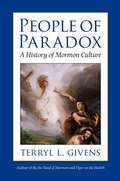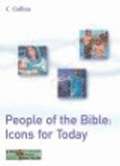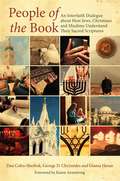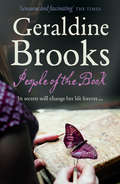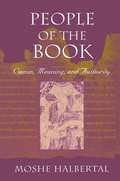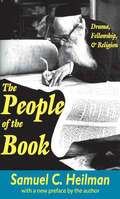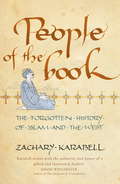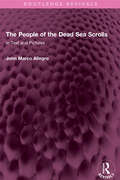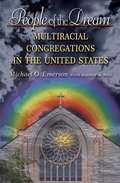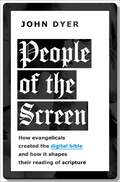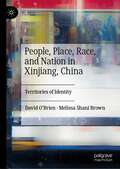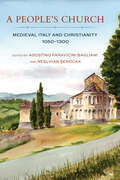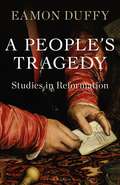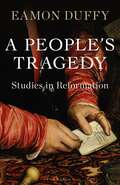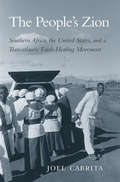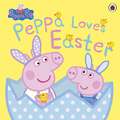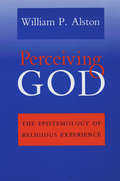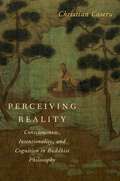- Table View
- List View
People of Paradox: A History of Mormon Culture
by Terryl L. GivensIn People of Paradox, Terryl Givens traces the rise and development of Mormon culture from the days of Joseph Smith in upstate New York, through Brigham Young's founding of the Territory of Deseret on the shores of Great Salt Lake, to the spread of the Latter-Day Saints around the globe. Throughout the last century and a half, Givens notes, distinctive traditions have emerged among the Latter-Day Saints, shaped by dynamic tensions--or paradoxes--that give Mormon cultural expression much of its vitality. Here is a religion shaped by a rigid authoritarian hierarchy and radical individualism; by prophetic certainty and a celebration of learning and intellectual investigation; by existence in exile and a yearning for integration and acceptance by the larger world. Givens divides Mormon history into two periods, separated by the renunciation of polygamy in 1890. In each, he explores the life of the mind, the emphasis on education, the importance of architecture and urban planning (so apparent in Salt Lake City and Mormon temples around the world), and Mormon accomplishments in music and dance, theater, film, literature, and the visual arts. He situates such cultural practices in the context of the society of the larger nation and, in more recent years, the world. Today, he observes, only fourteen percent of Mormon believers live in the United States. Mormonism has never been more prominent in public life. But there is a rich inner life beneath the public surface, one deftly captured in this sympathetic, nuanced account by a leading authority on Mormon history and thought.
PEOPLE OF THE BIBLE: Icons for Today (PDF)
by Nigel Bavidge Sue Cooper Paul Mannings Kathleen SteadPeople of the Bible: Icons for Today is a flexible Scripture resource developed by the National Project and published with the authority of the Catholic Bishops’ Conference of England and Wales. It supports and extends the teaching of Religious Education at Key Stage 3. Engages students with the Bible through an understanding of how it developed and how it is important today. • Encourages reflection and discussion of the great men and women of the Bible through the retelling of their stories, the issues they faced and the lessons learned. • Provides an ideal springboard from the teachings of the Bible to their relevance in today's society. • Trusted and comprehensive content written by Religious Education specialists and Scripture scholars.
People of the Book: An Interfaith Dialogue about How Jews, Christians and Muslims Understand Their Sacred Scriptures
by Karen Armstrong Usama Hasan George Chryssides Dan Cohn-SherbokWhat is the role of scripture in illuminating the lives of the faithful today? In this book, three experts in Judaism, Christianity and Islam respectively discuss and debate this question, by exploring the core messages of the Torah, Bible and Qu'ran. Taking a deeper look at the wide range of theological, political and social issues that divide (and sometimes unite) their religions, they reveal how inspiration and guidance can be drawn not only on life's big questions such as sin and the afterlife, but also on societal issues including war, suffering, marriage and justice.
People of the Book: A Novel (A&r Classics Ser.)
by Geraldine BrooksA novel from the author of ‘March’ and ‘Year of Wonders’ takes place in the aftermath of the Bosnian War, as a young book conservator arrives in Sarajevo to restore a lost treasure.
People of the Book: An Interfaith Dialogue about How Jews, Christians and Muslims Understand Their Sacred Scriptures
by Dan Cohn-Sherbok George Chryssides Usama Hasan Marcus BraybrookeWhat is the role of scripture in illuminating the lives of the faithful today? In this book, three experts in Judaism, Christianity and Islam respectively discuss and debate this question, by exploring the core messages of the Torah, Bible and Qu'ran. Taking a deeper look at the wide range of theological, political and social issues that divide (and sometimes unite) their religions, they reveal how inspiration and guidance can be drawn not only on life's big questions such as sin and the afterlife, but also on societal issues including war, suffering, marriage and justice.
People of the Book: Canon, Meaning, and Authority
by Moshe HalbertalHalbertal provides a panoramic survey of Jewish attitudes toward Scripture, provocatively organized around problems of normative and formative authority, with an emphasis on the changing status and functions of Mishnah, Talmud, and Kabbalah.
The People of the Book: Drama, Fellowship and Religion
by Samuel C. HeilmanJudaism has long derived its identity from its sacred books. The book or scroll--rather than the image or idol--has been emblematic of Jewish faith and tradition. The People of the Book presents a study of a group of Orthodox Jews, all of whom live in the modern world, engaged in the time-honored practice of lernen, the repeated review and ritualized study of the sacred texts. In preserving one of the activities of Jewish life, Samuel C. Heilman argues, these are the genuine -People of the Book.- For two years, Heilman participated in and observed five study circles in New York and Jerusalem engaged in the avocation of lernen the Talmud, the great corpus of Jewish law, lore, and tradition. These groups, made up of men who felt the ritualized study of sacred texts to be not only a religious obligation but also an appealing way to spend their evenings, weekends, and holidays, assembled together under the guidance of a teacher to review the holy books of their people. Having become part of this world, the author is able to provide first-hand observation of the workings of the study circle. Heilman's study moves beyond the merely descriptive into an analysis of the nature and meaning of activity he observed. To explain the character and appeal of the study groups, he employs three concepts: drama, fellowship, and religion. Inherent to the life of the study circle are various sorts of drama: -social dramas- playing out social relationships, -cultural performances- reenacting the Jewish world view, and -interactional dramas- and -word plays- involving the intricacies of the recitation and translation process. This book will be of interest to anthropologists and those interested in the academic study of religion.
The People of the Book: Drama, Fellowship and Religion
by Samuel C. HeilmanJudaism has long derived its identity from its sacred books. The book or scroll--rather than the image or idol--has been emblematic of Jewish faith and tradition. The People of the Book presents a study of a group of Orthodox Jews, all of whom live in the modern world, engaged in the time-honored practice of lernen, the repeated review and ritualized study of the sacred texts. In preserving one of the activities of Jewish life, Samuel C. Heilman argues, these are the genuine -People of the Book.- For two years, Heilman participated in and observed five study circles in New York and Jerusalem engaged in the avocation of lernen the Talmud, the great corpus of Jewish law, lore, and tradition. These groups, made up of men who felt the ritualized study of sacred texts to be not only a religious obligation but also an appealing way to spend their evenings, weekends, and holidays, assembled together under the guidance of a teacher to review the holy books of their people. Having become part of this world, the author is able to provide first-hand observation of the workings of the study circle. Heilman's study moves beyond the merely descriptive into an analysis of the nature and meaning of activity he observed. To explain the character and appeal of the study groups, he employs three concepts: drama, fellowship, and religion. Inherent to the life of the study circle are various sorts of drama: -social dramas- playing out social relationships, -cultural performances- reenacting the Jewish world view, and -interactional dramas- and -word plays- involving the intricacies of the recitation and translation process. This book will be of interest to anthropologists and those interested in the academic study of religion.
People of the Book: Forgotten History Of Islam And The West
by Zachary KarabellWe live in a world polarized by the ongoing conflict between Muslims, Christians and Jews, but - in an extraordinary narrative spanning fourteen centuries - Zachary Karabell argues that the relationship between Islam and the West has never been simply one of animosity and competition, but has also comprised long periods of cooperation and coexistence. Through a rich tapestry of stories and a compelling cast of characters, People of the Book uncovers known history, and forgotten history, as Karabell takes the reader on an extraordinary journey through the Arab and Ottoman empires, the Crusades and the Catholic Reconquista and into the modern era, as he examines the vibrant examples of discord and concord that have existed between these monotheistic faiths. By historical standards, today's fissure between Islam and the West is not exceptional, but because of weapons of mass destruction, that fissure has the potential to undo us more than ever before. This is reason enough to look back and remember that Christians, Jews and Muslims have lived constructively with one another. They have fought and taught each other, and they have learned from one another. Retrieving this forgotten history is a vital ingredient to a more stable, secure world.
The People of the Dead Sea Scrolls: in Text and Pictures (Routledge Revivals)
by John Marco AllegroFirst published in 1959, The People of the Dead Sea Scrolls gives a complete pictorial record of the dramatic story of the Dead Sea Scrolls – actually shows the places where the Scrolls were found, as well as the desert and caves in which the people of the Scrolls lived just before the dawn of Christianity. The striking photographs tell the exciting story of the discovery of the Scrolls and the subsequent archaeological excavations and research. They also show the rocky desert with the remains of the ancient Essene community in which the people of the Scrolls practiced their austere faith, and the Scrolls themselves, which reflect the life of the desert settlement, its leaders, and its religious spirit. This book will be of interest to students of history, religion and archaeology.
The People of the Dead Sea Scrolls: in Text and Pictures (Routledge Revivals)
by John Marco AllegroFirst published in 1959, The People of the Dead Sea Scrolls gives a complete pictorial record of the dramatic story of the Dead Sea Scrolls – actually shows the places where the Scrolls were found, as well as the desert and caves in which the people of the Scrolls lived just before the dawn of Christianity. The striking photographs tell the exciting story of the discovery of the Scrolls and the subsequent archaeological excavations and research. They also show the rocky desert with the remains of the ancient Essene community in which the people of the Scrolls practiced their austere faith, and the Scrolls themselves, which reflect the life of the desert settlement, its leaders, and its religious spirit. This book will be of interest to students of history, religion and archaeology.
People of the Dream: Multiracial Congregations in the United States
by Michael O. EmersonIt is sometimes said that the most segregated time of the week in the United States is Sunday morning. Even as workplaces and public institutions such as the military have become racially integrated, racial separation in Christian religious congregations is the norm. And yet some congregations remain stubbornly, racially mixed. People of the Dream is the most complete study of this phenomenon ever undertaken. Author Michael Emerson explores such questions as: how do racially mixed congregations come together? How are they sustained? Who attends them, how did they get there, and what are their experiences? Engagingly written, the book enters the worlds of these congregations through national surveys and in-depth studies of those attending racially mixed churches. Data for the book was collected over seven years by the author and his research team. It includes more than 2,500 telephone interviews, hundreds of written surveys, and extensive visits to mixed-race congregations throughout the United States. People of the Dream argues that multiracial congregations are bridge organizations that gather and facilitate cross-racial friendships, disproportionately housing people who have substantially more racially diverse social networks than do other Americans. The book concludes that multiracial congregations and the people in them may be harbingers of racial change to come in the United States.
People of the Dream: Multiracial Congregations in the United States
by Michael O. EmersonIt is sometimes said that the most segregated time of the week in the United States is Sunday morning. Even as workplaces and public institutions such as the military have become racially integrated, racial separation in Christian religious congregations is the norm. And yet some congregations remain stubbornly, racially mixed. People of the Dream is the most complete study of this phenomenon ever undertaken. Author Michael Emerson explores such questions as: how do racially mixed congregations come together? How are they sustained? Who attends them, how did they get there, and what are their experiences? Engagingly written, the book enters the worlds of these congregations through national surveys and in-depth studies of those attending racially mixed churches. Data for the book was collected over seven years by the author and his research team. It includes more than 2,500 telephone interviews, hundreds of written surveys, and extensive visits to mixed-race congregations throughout the United States. People of the Dream argues that multiracial congregations are bridge organizations that gather and facilitate cross-racial friendships, disproportionately housing people who have substantially more racially diverse social networks than do other Americans. The book concludes that multiracial congregations and the people in them may be harbingers of racial change to come in the United States.
People of the Screen: How Evangelicals Created the Digital Bible and How It Shapes Their Reading of Scripture
by John DyerPeople of the Screen traces the history of Bible software development, showing the unique and powerful role evangelical entrepreneurs and coders have played in shaping its functionality and how their choices in turn shape the reading habits of millions of people around the world. Examining advancements in Bible software from the first desktop applications to pioneering Bible websites, and later to mobile apps and virtual experiences, this book argues that evangelical creators have a distinct orientation toward societal change and technology called "Hopeful Entrepreneurial Pragmatism" that uniquely positions them to lead the digital Bible market, imbuing their creations with evangelical ways of understanding the nature and purpose of Scripture. This book offers a blend of historical research, interviews with developers, and field work among digital and print Bible readers, offering a nuanced look at the interconnected ecosystem of publishers, developers, pastors, institutions, and software companies. Digital Bibles aren't replacing print Bibles, author John Dyer shows. Rather, the future of Bible engagement involves readers using a mix of print, audio, and screens to suit their needs. He shows that sometimes the God of the page seems to say different things than the God of the screen, suggesting that we are still in the early stages of a multimedia approach to scripture.
People of the Screen: How Evangelicals Created the Digital Bible and How It Shapes Their Reading of Scripture
by John DyerPeople of the Screen traces the history of Bible software development, showing the unique and powerful role evangelical entrepreneurs and coders have played in shaping its functionality and how their choices in turn shape the reading habits of millions of people around the world. Examining advancements in Bible software from the first desktop applications to pioneering Bible websites, and later to mobile apps and virtual experiences, this book argues that evangelical creators have a distinct orientation toward societal change and technology called "Hopeful Entrepreneurial Pragmatism" that uniquely positions them to lead the digital Bible market, imbuing their creations with evangelical ways of understanding the nature and purpose of Scripture. This book offers a blend of historical research, interviews with developers, and field work among digital and print Bible readers, offering a nuanced look at the interconnected ecosystem of publishers, developers, pastors, institutions, and software companies. Digital Bibles aren't replacing print Bibles, author John Dyer shows. Rather, the future of Bible engagement involves readers using a mix of print, audio, and screens to suit their needs. He shows that sometimes the God of the page seems to say different things than the God of the screen, suggesting that we are still in the early stages of a multimedia approach to scripture.
People, Place, Race, and Nation in Xinjiang, China: Territories of Identity
by David O’Brien Melissa Shani BrownIn one of the only works drawing on interviews with both Uyghurs and Han in Xinjiang, China, and postcolonial perspectives on ethnicity, nation, and race, this book explores how forms of banal racism underpin ideas of self and other, assimilation and modernisation, in this restive region. Significant international attention has condemned the CCP’s use of forced internment in ‘re-education’ camps, as well as its campaign of cultural assimilation. In this wider context, this book focuses upon the ways in which ethnic difference is writ through the banalities of everyday life: who one trusts, what one eats, where one shops, even what time one’s clocks are set to (Xinjiang being perhaps one of the only places where different ethnic groups live by different time-zones).Alongside chapters focusing upon the coercive ‘re-education’ campaign, and the devastating Ürümchi Riots in 2009, this book also unpacks how discourses of Chinese nationalism romanticise empire and promote racialised ways of thinking about Chineseness, how cultural assimilation (‘Sinicisation’) is being justified through the rhetoric of ‘modernisation’, how Islamic sites and Uyghur culture are being secularised and commodified for tourist consumption. We also explore Uyghur and Han perspectives, including of each other, giving insight into the diversity of opinions within both groups.Based on many years of living and working in China, and fieldwork and interviews specifically in Xinjiang, this book will be valuable to a variety of readers interested in the region and Uyghur and Han identity, ethnic/national identities in contemporary China, and racisms in non-western contexts.
A People's Church: Medieval Italy and Christianity, 1050–1300
by Agostino Paravicini Bagliani Neslihan ŞenocakA People's Church brings together a distinguished international group of historians to provide a sweeping introduction to Christian religious life and institutions in medieval Italy. Each essay treats a single theme as broadly as possible, highlighting both the unique aspects of medieval Christianity on the Italian peninsula and the beliefs and practices it shared with other Christian societies. Because of its long tradition of communal self-governance, Christianity in medieval Italy, perhaps more than anywhere else, was truly a "people's church." At the same time, its exceptional urban wealth and literacy rates, along with its rich and varied intellectual and artistic culture, led to diverse forms of religious devotion and institutions.Contributors: Maria Pia Alberzoni on heresy; Frances Andrews on urban religion; Cécile Caby on monasticism; Giovanna Casagrande on mendicants; George Dameron on Florence; Antonella Degl'Innocenti on saints; Marina Gazzini on lay confraternities; Maureen C. Miller on bishops; Agostino Paravicini Bagliani and Pietro Silanos on the papacy and Italian politics; Antonio Rigon on clerical confraternities; Neslihan Şenocak on the pievi and care of souls; Giovanni Vitolo on Naples.
A People’s Tragedy: Studies in Reformation
by Eamon DuffyAs an authority on the religion of medieval and early modern England, Eamon Duffy is preeminent. In his revisionist masterpiece The Stripping of the Altars, Duffy opened up new areas of research and entirely fresh perspectives on the origin and progress of the English Reformation.Duffy's focus has always been on the practices and institutions through which ordinary people lived and experienced their religion, but which the Protestant reformers abolished as idolatry and superstition. The first part of A People's Tragedy examines the two most important of these institutions: the rise and fall of pilgrimage to the cathedral shrines of England, and the destruction of the monasteries under Henry VIII, as exemplified by the dissolution of the ancient Anglo-Saxon monastery of Ely. In the title essay of the volume, Duffy tells the harrowing story of the Elizabethan regime's savage suppression of the last Catholic rebellion against the Reformation, the Rising of the Northern Earls in 1569.In the second half of the book Duffy considers the changing ways in which the Reformation has been thought and written about: the evolution of Catholic portrayals of Martin Luther, from hostile caricature to partial approval; the role of historians of the Reformation in the emergence of English national identity; and the improbable story of the twentieth century revival of Anglican and Catholic pilgrimage to the medieval Marian shrine of Walsingham. Finally, he considers the changing ways in which attitudes to the Reformation have been reflected in fiction, culminating with Hilary Mantel's gripping trilogy on the rise and fall of Henry VIII's political and religious fixer, Thomas Cromwell, and her controversial portrayal of Cromwell's Catholic opponent and victim, Sir Thomas More.
A People’s Tragedy: Studies in Reformation
by Eamon DuffyAs an authority on the religion of medieval and early modern England, Eamon Duffy is preeminent. In his revisionist masterpiece The Stripping of the Altars, Duffy opened up new areas of research and entirely fresh perspectives on the origin and progress of the English Reformation.Duffy's focus has always been on the practices and institutions through which ordinary people lived and experienced their religion, but which the Protestant reformers abolished as idolatry and superstition. The first part of A People's Tragedy examines the two most important of these institutions: the rise and fall of pilgrimage to the cathedral shrines of England, and the destruction of the monasteries under Henry VIII, as exemplified by the dissolution of the ancient Anglo-Saxon monastery of Ely. In the title essay of the volume, Duffy tells the harrowing story of the Elizabethan regime's savage suppression of the last Catholic rebellion against the Reformation, the Rising of the Northern Earls in 1569.In the second half of the book Duffy considers the changing ways in which the Reformation has been thought and written about: the evolution of Catholic portrayals of Martin Luther, from hostile caricature to partial approval; the role of historians of the Reformation in the emergence of English national identity; and the improbable story of the twentieth century revival of Anglican and Catholic pilgrimage to the medieval Marian shrine of Walsingham. Finally, he considers the changing ways in which attitudes to the Reformation have been reflected in fiction, culminating with Hilary Mantel's gripping trilogy on the rise and fall of Henry VIII's political and religious fixer, Thomas Cromwell, and her controversial portrayal of Cromwell's Catholic opponent and victim, Sir Thomas More.
The People’s Zion: Southern Africa, the United States, and a Transatlantic Faith-Healing Movement
by Joel CabritaIn The People’s Zion, Joel Cabrita tells the transatlantic story of Southern Africa’s largest popular religious movement, Zionism. It began in Zion City, a utopian community established in 1900 just north of Chicago. The Zionist church, which promoted faith healing, drew tens of thousands of marginalized Americans from across racial and class divides. It also sent missionaries abroad, particularly to Southern Africa, where its uplifting spiritualism and pan-racialism resonated with urban working-class whites and blacks. Circulated throughout Southern Africa by Zion City’s missionaries and literature, Zionism thrived among white and black workers drawn to Johannesburg by the discovery of gold. As in Chicago, these early devotees of faith healing hoped for a color-blind society in which they could acquire equal status and purpose amid demoralizing social and economic circumstances. Defying segregation and later apartheid, black and white Zionists formed a uniquely cosmopolitan community that played a key role in remaking the racial politics of modern Southern Africa. Connecting cities, regions, and societies usually considered in isolation, Cabrita shows how Zionists on either side of the Atlantic used the democratic resources of evangelical Christianity to stake out a place of belonging within rapidly-changing societies. In doing so, they laid claim to nothing less than the Kingdom of God. Today, the number of American Zionists is small, but thousands of independent Zionist churches counting millions of members still dot the Southern African landscape.
The People’s Zion: Southern Africa, the United States, and a Transatlantic Faith-Healing Movement
by Joel CabritaIn The People’s Zion, Joel Cabrita tells the transatlantic story of Southern Africa’s largest popular religious movement, Zionism. It began in Zion City, a utopian community established in 1900 just north of Chicago. The Zionist church, which promoted faith healing, drew tens of thousands of marginalized Americans from across racial and class divides. It also sent missionaries abroad, particularly to Southern Africa, where its uplifting spiritualism and pan-racialism resonated with urban working-class whites and blacks. Circulated throughout Southern Africa by Zion City’s missionaries and literature, Zionism thrived among white and black workers drawn to Johannesburg by the discovery of gold. As in Chicago, these early devotees of faith healing hoped for a color-blind society in which they could acquire equal status and purpose amid demoralizing social and economic circumstances. Defying segregation and later apartheid, black and white Zionists formed a uniquely cosmopolitan community that played a key role in remaking the racial politics of modern Southern Africa. Connecting cities, regions, and societies usually considered in isolation, Cabrita shows how Zionists on either side of the Atlantic used the democratic resources of evangelical Christianity to stake out a place of belonging within rapidly-changing societies. In doing so, they laid claim to nothing less than the Kingdom of God. Today, the number of American Zionists is small, but thousands of independent Zionist churches counting millions of members still dot the Southern African landscape.
Peppa Pig: Peppa Loves Easter (Peppa Pig)
by Peppa PigThis new picture book is the perfect gift this Easter.It's Easter time and Madame Gazelle has a special Easter surprise for Peppa and her friends after playgroup - Miss Rabbit has organised an Easter Egg-stravaganza! There's Easter cakes, Easter cards to make, an egg decorating stall and Granny and Grandpa Pig's fluffy newly-hatched chicks, but where is Miss Rabbit? And who is inside the huge Easter egg?Peppa Loves Easter!Also look out for Peppa Pig: Peppa's Egg-cellent Easter Sticker Activity Book 9780241381014 and Peppa Pig: Peppa the Easter Bunny 9780241411827.
Perceiving God: The Epistemology of Religious Experience
by William P. AlstonIn this clear and provocative account of the epistemology of religious experience, William P. Alston argues that the perception of God—his term for direct experiential awareness of God—makes a major contribution to the grounds of religious belief. Surveying the variety of reported direct experiences of God, Alston demonstrates that a person can be justified in holding certain beliefs about God on the basis of mystical experience.
Perceiving Reality: Consciousness, Intentionality, and Cognition in Buddhist Philosophy
by Christian CoseruWhat turns the continuous flow of experience into perceptually distinct objects? Can our verbal descriptions unambiguously capture what it is like to see, hear, or feel? How might we reason about the testimony that perception alone discloses? Christian Coseru proposes a rigorous and highly original way to answer these questions by developing a framework for understanding perception as a mode of apprehension that is intentionally constituted, pragmatically oriented, and causally effective. By engaging with recent discussions in phenomenology and analytic philosophy of mind, but also by drawing on the work of Husserl and Merleau-Ponty, Coseru offers a sustained argument that Buddhist philosophers, in particular those who follow the tradition of inquiry initiated by Dign?ga and Dharmak?rti, have much to offer when it comes to explaining why epistemological disputes about the evidential role of perceptual experience cannot satisfactorily be resolved without taking into account the structure of our cognitive awareness. Perceiving Reality examines the function of perception and its relation to attention, language, and discursive thought, and provides new ways of conceptualizing the Buddhist defense of the reflexivity thesis of consciousness-namely, that each cognitive event is to be understood as involving a pre-reflective implicit awareness of its own occurrence. Coseru advances an innovative approach to Buddhist philosophy of mind in the form of phenomenological naturalism, and moves beyond comparative approaches to philosophy by emphasizing the continuity of concerns between Buddhist and Western philosophical accounts of the nature of perceptual content and the character of perceptual consciousness.
